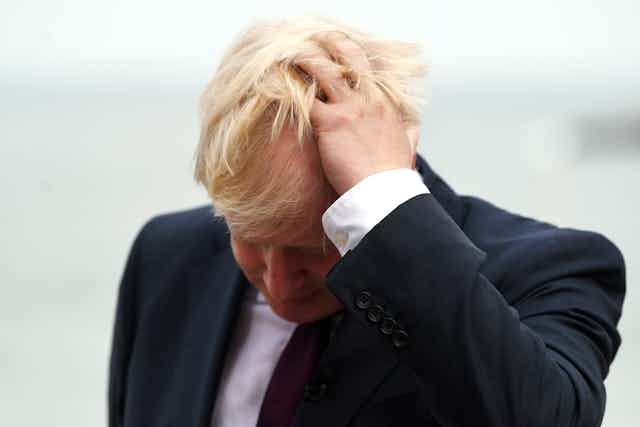A look at the latest polling suggests the Boris bounce is over but that the Conservatives are still the most likely to emerge from an election as the biggest party. Labour continues to trail, despite the upheaval under Boris Johnson.
This is based on trends in voting intentions for the national political parties in 157 polls conducted between November 4 2018 and September 17 2019. These poll of polls estimates are an indicator of voting support in the middle of the party conference season, and a guide to what might happen in a forthcoming general election.

Several developments stand out since the last poll of polls exercise we did at the end of August. The first is that Boris Johnson’s honeymoon is clearly over.
The surge in Conservative voting intentions, which occurred after he became prime minister, petered out in early September. That said, the Conservatives are still 9% ahead of Labour, which has not improved its standing in the polls since the new prime minister moved into Downing Street on July 23.
On the other hand, Labour might get a boost from the coverage of the party conference in Brighton, although the conference did not start well given the row over an attempt to sack the deputy leader, Tom Watson. This was quickly squashed by Jeremy Corbyn, but it is likely to dampen any upsurge in the polls. Further rows, including disagreements about Labour’s position on Brexit, may not help.

Another factor is the Liberal Democrats conference under their new leader Jo Swinson, which has given her party a bounce in the polls. In the Liberal Democrats’ case, this “oxygen of publicity” effect is particularly important because their conference doesn’t get as much media coverage as Labour and the Conservatives. The Liberal Democrats used their conference effectively to voice their strong opposition to leaving the EU and this will help them attract Remainers in the electorate.
A third factor is that there is still considerable support for the Brexit Party. This is vital to a Conservative victory in the election. If we calculate the changes in seats likely to occur since the 2017 election based on the polling, then another hung parliament is on the cards. We estimate that the Conservatives would win 323 seats, Labour 222, the Liberal Democrats 32, the SNP 48, Plaid Cymru four, the Greens two and the Brexit party one seat. This would mean a return to a Conservative minority government.
But if Boris Johnson succeeds in winning half of the Brexit voters, then our calculations show that his party would take 365 seats, Labour 191, the Liberal Democrats 29, the SNP 41, Plaid Cymru four, the Greens two and the Brexit party zero. This would produce a comfortable working majority for the Conservatives and they could pursue the Brexit outcome they really want.
The fight for Brexit votes
We can get a sense of how support for the various parties influences each other by looking at the strength of the association between trends in their voting intentions over time. A statistical tool called the correlation coefficient provides this information. It is a number varying from zero (meaning no relationship between changes in support for the parties) to one (meaning a one per cent increase in support for the first party coincides with a one per cent rise in support for the second party).
The correlation between Conservative vote intentions and Brexit Party vote intentions since the Brexit Party was formed earlier this year is -0.6, meaning that an increase in the Conservative vote coincides with a decrease in the Brexit vote, and vice versa. This is a strong, although not perfect, relationship. In contrast, the correlation between Labour and Brexit Party vote intentions is only -0.31. This means that the rivalry between the Conservatives and the Brexit Party is twice as strong as that between Labour and the Brexit Party. The correlation between changes in Liberal Democrat and Brexit Party voting is even weaker at -0.14.
In our survey conducted shortly after the European elections we found that 77% of respondents who voted for the Brexit party wanted a no-deal Brexit. Despite the spin from Number 10 about progress in the talks with the EU, the act of parliament which locks the prime minister into asking for an extension if there is no agreement deprives the government of bargaining power. This means that Boris Johnson will have to accept something like Theresa May’s deal, raising questions about whether it can pass parliament.
It may be dressed up as being different, but this will not prevent Nigel Farage from loudly proclaiming that the Brexit cause has been betrayed. In these circumstances, it is doubtful if many Brexit Party supporters will choose the Conservatives. In turn, this will make it very difficult – perhaps impossible – for Johnson and his party to win a parliamentary majority.
So, as things stand, an early election after another extension of the UK’s membership of the EU is unlikely to solve the Brexit crisis.

